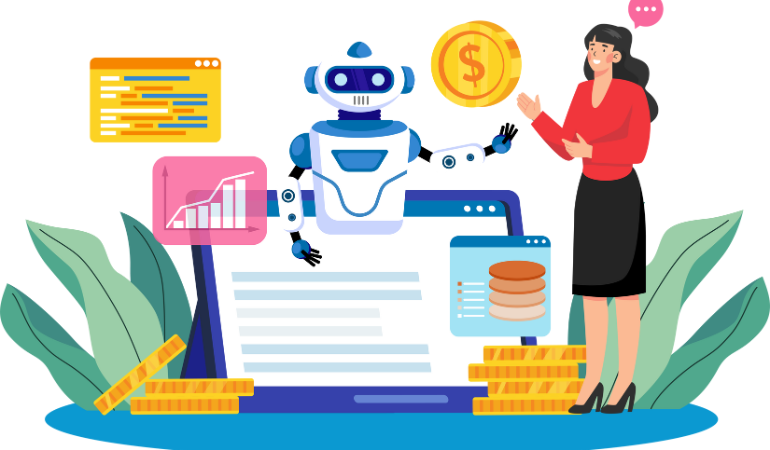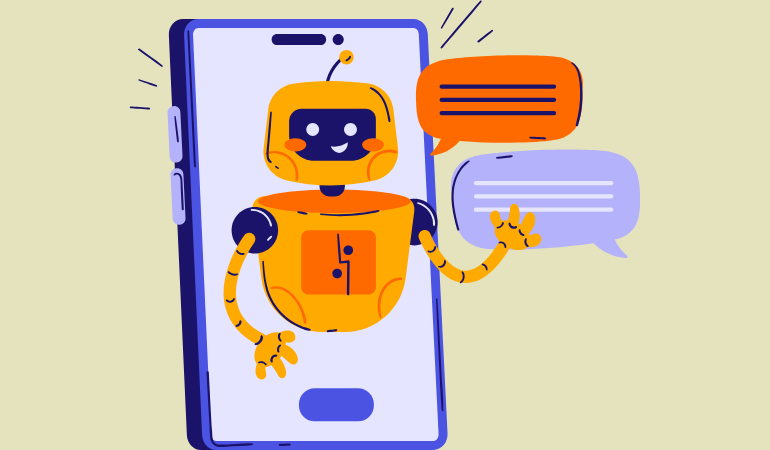Chatbots vs. Virtual Assistants: Understanding the Difference
With the rise of artificial intelligence, numerous tools have emerged to help brands automate their processes. Among the most prominent are chatbots and virtual assistants. While these tools share similarities, they also have distinct differences.
Key Difference: Chatbots vs. Virtual Assistants
One significant distinction is that chatbots can function as virtual assistants, but not all virtual assistants are chatbots. The capability of a chatbot to serve as a virtual assistant largely depends on the integration of advanced AI.
For example, AI-powered chatbots like BanglaChatbot can take on a variety of roles, including:
- Social media management
- Sales representation
- Marketing
- Virtual assistance
This means that advanced chatbots like BanglaChatbot can perform tasks traditionally handled by virtual assistants—and in some cases, even exceed their capabilities.
Capabilities and Business Applications
Both chatbots and virtual assistants offer vast potential for businesses:
- Chatbots excel in real-time customer support, lead generation, and marketing automation.
- Virtual assistants often focus on task management, scheduling, and personalized services.
While their features may differ, the key is identifying the areas where these tools can best serve your business needs. By leveraging the unique strengths of chatbots and virtual assistants, you can streamline operations, improve customer engagement, and drive business growth.
Choosing the Right Tool
As an organization considering an investment in AI applications, understanding the differences between chatbots and virtual assistants is essential. This knowledge will help you:
- Determine which tool aligns best with your objectives.
- Optimize the use of these AI technologies to maximize their benefits for your business.
Whether it’s BanglaChatbot or a virtual assistant, the right AI solution can revolutionize your processes and deliver significant value to your brand.

What is a Chatbot and How is it Different from a Virtual Assistant?
A chatbot is a virtual program designed to simulate conversations with human users, often serving as a communication tool for organizations to interact with their customers over the internet.
Chatbots can generally be classified into two main types: scripted bots and virtual assistants. Understanding these types helps clarify the difference between a chatbot and a virtual assistant.
Scripted Bots vs. Virtual Assistants
Scripted Bots (Decision-Tree Chatbots)
- Scripted bots, also known as decision-tree or rule-based chatbots, operate based on pre-defined rules and commands.
- They are straightforward and respond according to a set script, similar to a flow chart.
- These bots are not conversational or flexible. Their interactions are limited to the commands they have been programmed to understand, making them less intelligent and less capable than AI-powered chatbots or virtual assistants.
- Scripted bots are often used for specific tasks such as answering Frequently Asked Questions (FAQs) or guiding users through basic conversions.
- A major drawback is that conversations with scripted bots can cause friction. If a user inputs something outside the predefined script, the bot may not be able to process or respond correctly.
Virtual Assistants (AI-Powered Chatbots)
- Virtual assistants, including advanced AI-powered chatbots like BanglaChatbot, are far more intelligent and flexible.
- These tools leverage artificial intelligence to understand and process more complex and natural conversations, even if the input doesn’t match pre-programmed commands.
- Virtual assistants can perform diverse roles such as customer service, sales, marketing, and task automation, going beyond the capabilities of scripted bots.
- They are conversational and adaptable, offering a smoother, more human-like interaction.
Key Differences
| Feature | Scripted Bots | Virtual Assistants (AI-Powered Chatbots) |
| Flexibility | Rigid, limited to programmed responses | Highly adaptable and capable of natural conversations |
| Intelligence | Rule-based, lacks AI capabilities | AI-driven, capable of learning and adapting |
| Functionality | Task-specific, e.g., answering FAQs | Multi-functional, e.g., customer support, sales, and task management |
| Interaction Quality | Often causes friction if input is outside its scope | Smooth and human-like interaction |
Conclusion
While scripted bots are useful for straightforward tasks, their limitations make them unsuitable for roles that require flexibility or intelligence. Virtual assistants, such as BanglaChatbot, represent the next generation of chatbot technology, offering businesses a powerful tool for automation, engagement, and seamless interaction.

AI-Powered Chatbots and Virtual Assistants
AI-powered chatbots are among the most advanced types of bots available today, and yes, they can function as virtual assistants.
Artificial intelligence enables chatbots to utilize natural language processing (NLP), machine learning (ML), and semantic comprehension to simulate human-like conversations. This intelligence sets AI-powered chatbots apart from simpler bots.
When a chatbot like BanglaChatbot, for example, is AI-powered, it demonstrates exceptional capabilities:
- It can hold meaningful conversations with customers.
- It can remind customers to complete their checkout process if they leave items in their cart.
- It generates and qualifies leads, as well as closes sales deals.
- It analyzes user data to offer personalized recommendations tailored to individual preferences.
Natural Language Processing (NLP) and Machine Learning in AI Chatbots
- NLP enables AI chatbots to comprehend human language, analyze it, and deliver appropriate, understandable responses.
- Machine Learning allows chatbots to learn from interactions, improving their performance and adaptability over time.
Although incredibly intelligent, AI-powered chatbots like BanglaChatbot must be carefully planned and guided to achieve optimal results.
Virtual Assistants and Their Applications
Virtual assistants (VAs) are software-based agents designed to assist with daily tasks. They can:
- Schedule appointments
- Make calls
- Set alarms
- Automate to-do lists
They function like human personal assistants and are widely used across various industries. AI-powered chatbots share similar functionalities and often go beyond, making them suitable to serve as virtual assistants.
AI Chatbots as Virtual Assistants
AI-powered chatbots, such as BanglaChatbot, can perform tasks traditionally associated with virtual assistants because they:
- Understand and process human language.
- Respond conversationally and contextually.
For instance, just as virtual assistants can check flight statuses, chatbots can too. Many airlines, including British Airways, Aeromexico, Volaris, Avianca, and Singapore Airlines, already employ chatbots to help users book and track flights.
In the healthcare industry, AI-powered chatbots engage users about health concerns, recommend precautions and treatments, or connect them with relevant healthcare professionals.
Conclusion
AI-powered chatbots like BanglaChatbot are redefining the capabilities of virtual assistants. By combining advanced conversational skills with task-specific intelligence, these chatbots bridge the gap between traditional bots and digital personal assistants, demonstrating their immense value across industries. With proper development and deployment, there is no reason why an AI-powered chatbot cannot be considered a virtual assistant.
